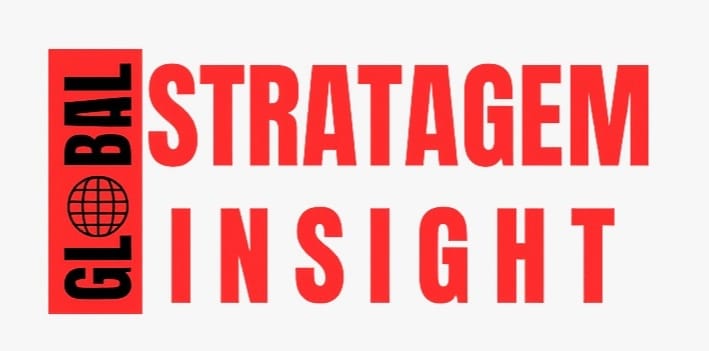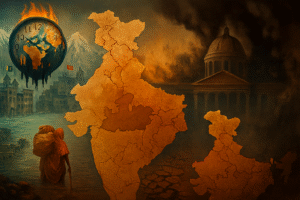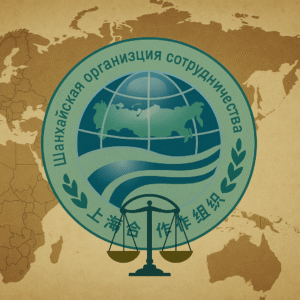Is another ‘Arab Spring’ simmering in the African Continent?

Simmering Tensions: Is another Arab Spring unfolding on the African continent
Introduction:
The Arab Spring, a series of protests aimed at overthrowing governments, began in Tunisia and spread to many other Arab countries. The self-immolation of a vendor in Tunisia ignited these protests, leading to the overthrow of the government within ten days. The success of this protest spread a wave of hope across the Arab world, and people took to the streets in Egypt, Yemen, Syria, Libya, and other countries to bring down the autocratic regimes. Autocrats such as Hosni Mubarak in Egypt, Zine El Abidine in Tunisia, Muhammad Gaddafi in Libya, and Al Abdullah Saleh in Yemen were successfully overthrown by the masses. The main causes that led to these widespread protests were economic hardship, unemployment among youth, widespread corruption, and inadequate governance.
The recent protests across the African continent remind us of the conditions that led to the Arab Spring. People in many African countries are protesting against inflation, economic inequality, unemployment, and corruption. The factors that led to the recent protests in Kenya, Uganda, and Nigeria resemble the ingredients of the Arab Spring. Youth who sought change led these protests, mirroring the main drivers of the Arab Spring. Given the similarities in the contributing factors, I am concerned that an African Spring may be brewing on the continent.
If we juxtapose these two events, we can find many similarities between the causes that led to the uprisings. The most important factor in the Arab Spring was economic hardship. People were dissatisfied with the prevailing political systems across the Arab world. These authoritarian regimes were unable to provide economic opportunities to the common people, especially to the youth. Consequently, this dissatisfaction translated into violent protests and spread to the whole Arab world. If we analyze the current protests in Africa, we come to know that people are also dissatisfied with the current authoritarian or semi-authoritarian regimes.
Moreover, these regimes are also unable to improve the economic situation of common people. For instance, in Nigeria, the prices of food staples have risen threefold under President Bola Tinubu. In August, tens of thousands of people took to the streets against spiking inflation and inadequate governance. In July, protests started in Kenya against the Finance Bill 2024, which aims to raise taxes by $2.7 billion in additional revenue. These two instances show the regimes are unable to address the economic concerns of common people.
Autocrats ruled the Arab world for decades before the Arab Spring. People in many countries took to the streets to get rid of these autocrats. Likewise, people in many countries in Africa are protesting to end inadequate governance. Despite the appearance of democracy in many countries, rigging and manipulation often occur during elections. For instance, in Zimbabwe, President Emmerson Mnangagwa won the alleged rigged election in 2023 and became the president for a second term. Alleged rigging and fraud have also marred the election in Tanzania. Due to these fraudulent elections, common people have lost trust in political institutions, and they want change. People from Sudan to Kenya are protesting to end evil governance. The people in Nigeria arranged protests under the banner “EndbadGovernanceinNigeria.” People in Kenya also arranged protests against inadequate governance in the country.
The role of youth was pivotal in the Arab Spring. They were frustrated due to unemployment and the lack of economic opportunities. They took to the streets to express their frustration and compel the government for economic reforms. Most of these students were either university students or recent graduates, who were frustrated by the lack of opportunities available to them. Similarly, youth are also at the centre of the current wave of protest across the African continent. The youth is frustrated with the current government due to its inaction to provide them with economic opportunities. In Africa, 60% of the population is under 25, making it the youngest continent. Instead of capitalizing on this demographic dividend, leaders in many countries have demonstrated minimal interest in addressing their economic hardships. Recent protests in many countries show that they are dissatisfied with their governments and expressed their frustrations by hitting the streets. For instance, in Kenya, protests erupted in June, which continued for weeks, against the increase in taxes through the Finance Bill 2024. Youth across the country largely led these protests, forcing President Rutto to scrap the finance bill. The Kenyan youth became an inspiration for other African youth, which led to demonstrations in other countries, e.g., Uganda and Nigeria. The Young Nigerians started protesting under the banner #EndBadGovernance across the country. Uganda also witnessed similar protests against corruption.
Social media was at the heart of the Arab Spring. The tech-savvy youth used social media to arrange protests, coordinate with fellow protesters, and devise plans to stage demonstrations in different areas. They also shared pictures and videos on Facebook and X (formerly Twitter), which mainstream media otherwise censored. Due to the discreet use of social media, the protesters were able to grab the attention of the international audience. Taking inspiration from the Arab Spring, the African youth are also using social media to mobilize protesters, live-stream as the protests unfold, and counter the propaganda of the government.
In addition to these, social media has become the most powerful means to express their frustration against the state. For example, in Angola, social media platforms, namely Facebook, Twitter, and Instagram, have become potent weapons for youth to express their dissenting voices. The Kenyans used social media to mobilize protesters under the hashtag “REJECTFINANCEBILL2024.” TikTokers posted videos on TikTok highlighting the negative effects of government policies. The protesters also live-streamed their clashes with the security personnel and posted them on social media. These illustrations highlight the role of social media in fueling protests in many African countries.
Conclusion:
In nutshell the current wave of protests in many African countries resembles the Arab Spring that swept through the Arab world. The youth in Africa, like in the Arab world during spring, are frustrated by the lack of economic opportunities, rising inflation, unemployment, and bad governance. Youth across the continent largely spearhead these protests, demanding that their governments create economic opportunities and curb inflation. Social media has also become a potent weapon for African youth to express their voices and counter the propaganda of the state. Young people, often termed Gen Z, from Kenya to Zimbabwe are protesting against the high cost of living and the lack of economic opportunities, demanding employment opportunities and better governance. Their patience is exhausting, and they are unwilling to compromise on their aspirations for a better life.




1 thought on “Is another ‘Arab Spring’ simmering in the African Continent?”